Souvenirs of the S-Shaped Land: What Vietnamese Gifts to Buy on your Travels
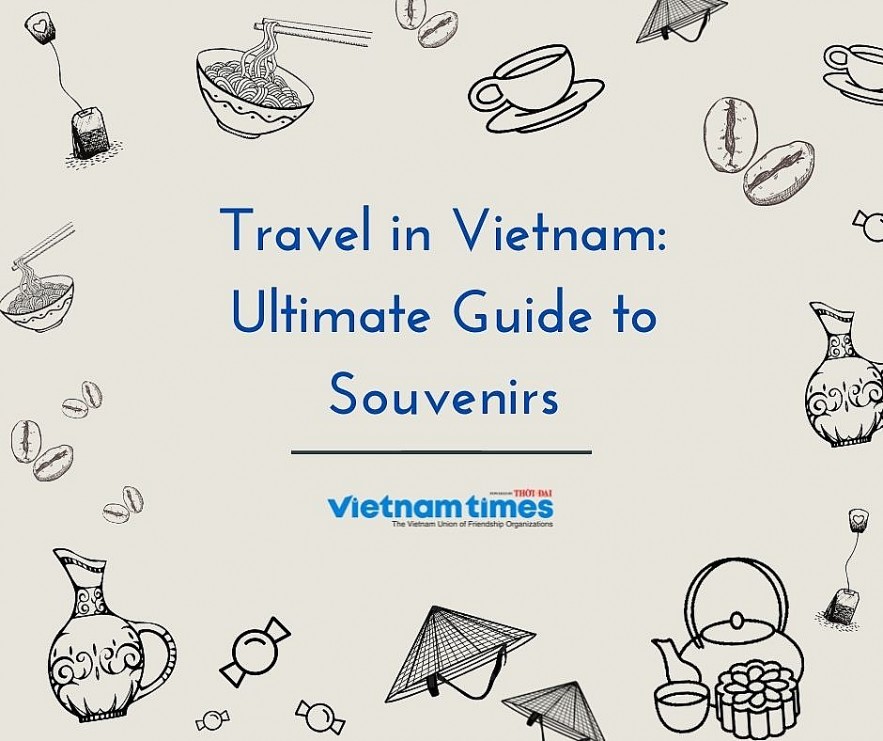 |
| Photo: Valerie Mai |
Vietnam is filled with colorful markets, friendly street vendors, souvenirs stalls, and designer boutiques; all guaranteed to leave you with heavier luggage and a lighter wallet after a trip through the S-shaped land. With many different gifts to choose from, souvenir shopping in Vietnam is no easy task!
Don't worry, we've got you covered! As Vietnam's tourism industry reopens, we have compiled a list of 9 practical, lightweight Vietnamese souvenirs that you can find around the country. Made from years of tradition and skill, these gifts are sure to be the focal point for any home.
Clothing
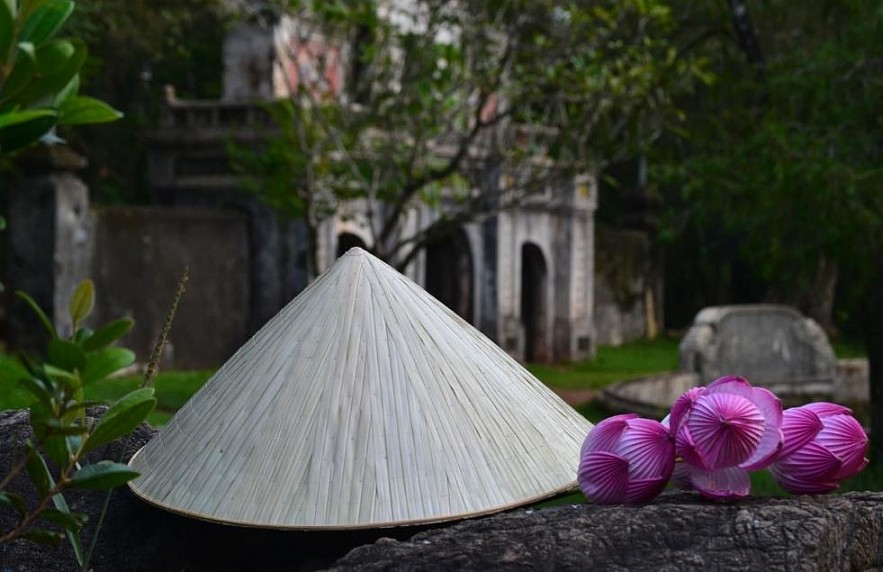 |
| Conical hat |
Conical hat
Vietnam's most iconic hat, the nón lá, is possibly the most versatile piece of headgear in human history. It functions as a hat, an umbrella, a fan, a basket, and most importantly, a deterrent for the sun's harsh rays.
The yellowish-white hat has gone through a long history of development and reformation. No one knows when it was invented, yet the hat appears in ancient Vietnamese folk art. Throughout history, the Vietnamese palm leaf hat has changed its form several times, from flat and curvy shapes to become today's conical hat.
The shapes and styles of nón lá are diverse from region to region. For example, nón lá in northern provinces has a wider frame and thicker layers of leaves. Meanwhile, people in Hue prefer lighter and thinner hats, hiding a secret poem between two layers of leaves.
To serve the country's booming tourism, unique designs, shapes, and sizes are brought into the market. Conical hats are sold at every market and souvenir shop, from the cities to villages. Any visits to any night markets offer you a variety of conical hats priced from VND 20.000 - 200.000 (US$1 - 10) depending on the design and quality.
Where to buy conical hat:
Dong Xuan market, Ha Noi
Dong Ba market, Hue
Ben Thanh market, Ho Chi Minh City
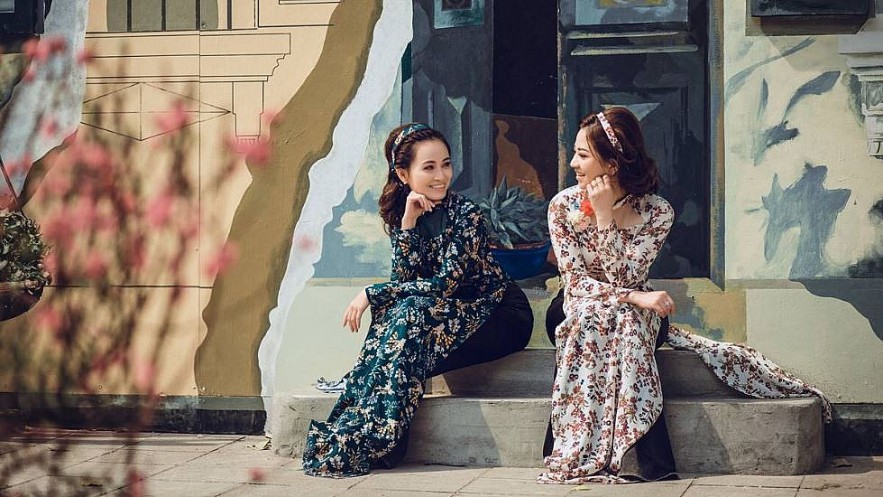 |
| Ao dai |
Ao dai
The ankle-long, tight-fitting garment is probably the most recognized Vietnam souvenir. According to the Vietnam National Administration of Tourism, the history of ao dai dated back to the 18th century, when the five-part dress was invented. Royals and elites used the finest fabric to make their dresses with colors and details representing their rankings.
In the 1930s, the dress was simplified into two parts by Vietnamese artist Le Mur Nguyen Cat Tuong. Taking inspiration from western fashion, the new design was reluctantly accepted when it first came out. Gradually, the two-part ao dai becomes famous for women across the country.
These days, female high school students in some provinces are required to wear white ao dai for at least one day a week. Vietnamese women love putting on their traditional costumes on important occasions such as Tet, women's day, weddings.
To shine in ao dai, make sure you choose a dress and pants of contrast colors. While most colors are chosen based on the buyers' taste, some have certain meanings. For example, a white ao dai represents the youth and innocence of a young lady while a red one means luck and prosperity. Therefore, white ao dai are often seen during graduation ceremonies and red ao dai are mainstays of Tet and weddings.
Vietnamese women often buy tailored ao dai. However, some brands and supermarkets offer ready-made options. An ao dai often costs from VND 200.000 - 2.000.000 (US$ 8,7-87).
Where to buy ao dai:
Thuy Design House - 9 Trang Tien, Hoan Kiem, Hanoi
Bility - 134 De La Thanh, Dong Da, Hanoi
Chi Cong Design - 38 Nguyen Khuyen, Hue
Hieu ve Dong Duong - 385 Tran Cao Van, Thanh Khe, Da Nang
Nosbyn - 28 Nguyen Trai, District 1, Ho Chi Minh City
Rosemary Clothing - 160 Dien Bien Phu, District 3, Ho Chi Minh City
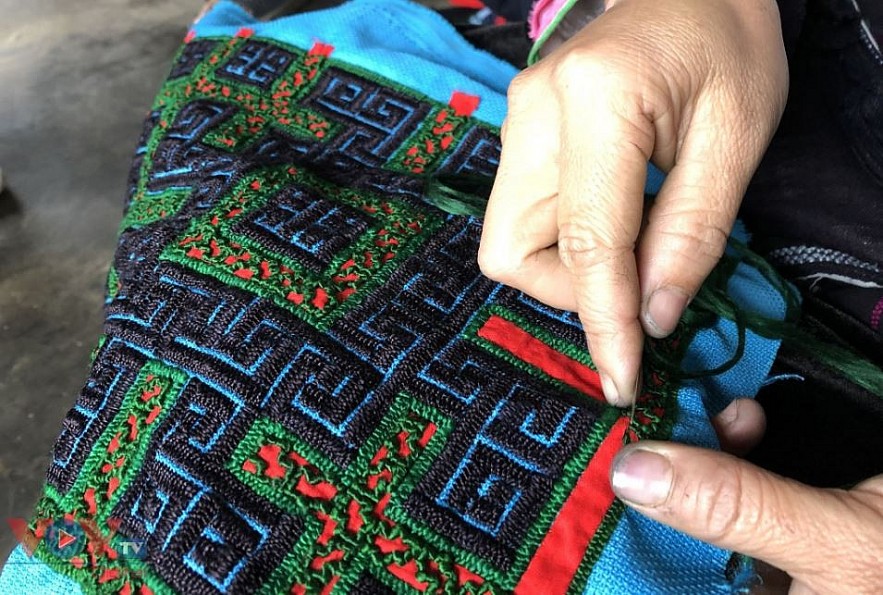 |
| Tribal textiles |
Tribal textiles
Vietnam is home to 54 ethnic groups, many of which have reserved their unique brocade. Fabric patterns of different ethnic groups may seem identical to foreigners, yet each has its own meaning and story. For example, in H'mong culture, symmetrical flower indicates harmony and happiness, meanwhile, Muong people embroider chained flowers in the hope of a strong bond among family members.
Most tribal textiles are handmade by meticulous weaving techniques passed down from generations. Local materials and natural dye form the fabric's distinguished vibrancy. These days, rather than their traditional clothing, ethnic groups across Vietnam use their fabric to make t-shirts, bags, hats, or stuffed animals to serve tourism demand.
The price of brocade products fluctuates from a dozen to millions dong due to the materials, weaving technique, and scarcity. If you take a trip to villages in the northern mountainous regions or provinces along the south-central coast, hand weaved fabric is sold in most souvenir shops and markets. For those hunting these special patterns in big cities, check out our recommendation below!
Where to buy tribal textile products?
Amazing Hanoi - 71 Hang Gai, Hoan Kiem, Hanoi
Maison Chance - Based in Ho Chi Minh City, contact via Facebook "Doanh nghiệp xã hội Nhà May Mắn - Maison Chance"
House of Saigon - 27 Dang Tat, District 1, Ho Chi Minh City
Food & Drink
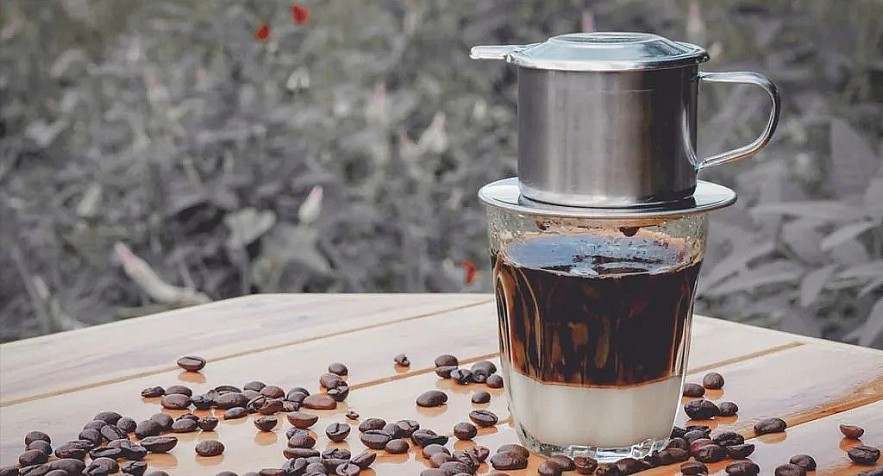 |
| Coffee bean and phin |
Coffee bean and phin
Coffee lovers of the world rejoice when arriving in Vietnam. Across the country, you can find coffee shops and stalls on every street in every city, from modern, trendy cafes run by the young to retro carts that have been strolling along the streets for decades.
Dark, intense, and rich Vietnamese coffee is made from robusta beans or a mix of robusta and arabica grown mostly in the central highland. Buon Me Thuot, the "Mecca of Vietnamese coffee," has thousands of coffee farms stretching along the red basalt highland.
Brewing technique considerably contributes to the taste of Vietnamese coffee. Local people use a French drip filter (called a phin), which sits on top of the cup.
Buying coffee beans and phin can be confusing due to the diverse supplies. If you want a safe choice, head to the nearest supermarket for classic stainless phin and well-known packaged coffee beans such as Trung Nguyen, Highland, or Vinacafe. For home-roasted beans, check out the following list.
Where to buy coffee beans?
Tay Nguyen Soul - 34/31A Hoang Ngoc Phach, Tan Phu District, Ho Chi Minh City or order from their Shopee
Cafe Mai - 52 Nguyen Du, Hai Ba Trung District, Hanoi
Thanh Bao - 32 Hoang Dieu, Buon Me Thuot, Dak Lak
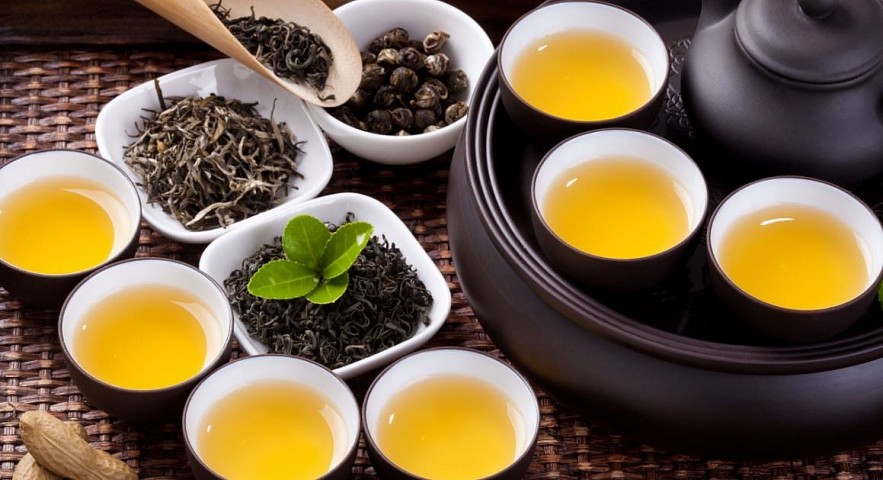 |
| Loose tea |
Loose tea
In Vietnam, tea is considered the everyday beverage of the elderly. Natives often start their day with a cup of tea, instead of coffee. Tea is consumed after meals, during working hours, casual gatherings, even during the day for no specific reason. While northern people generally prefer hot and strong tea served in small ceramic cups, southerners often drink tea with ice.
Tea is grown in almost every region across the country, among which Thai Nguyen is the most famous. Tan Cuong, a village in Thai Nguyen, produces green tea with so special taste that even the pickiest drinkers get impressed. A sip of Tan Cuong starts off with a bitter taste on the tongue but leaves a deep sweetness after being swallowed down the throat.
Cau Dat farm in Da Lat is famous for its vast tea hill, where tourists can enjoy a chill day at a charming coffee shop and bring home a couple of tea boxes.
While you can buy loose tea at any groceries stores or supermarket in Vietnam, here are some locations for those seeking more unique options.
Where to buy loose tea?
Thuong Tra - Room 301, no. 2, Tong Dan, Hoan Kiem, Hanoi
Cau Dat farm - Da Lat, Lam Dong
Phuc Long - Any Phuc Long stores across the country, or order from their website
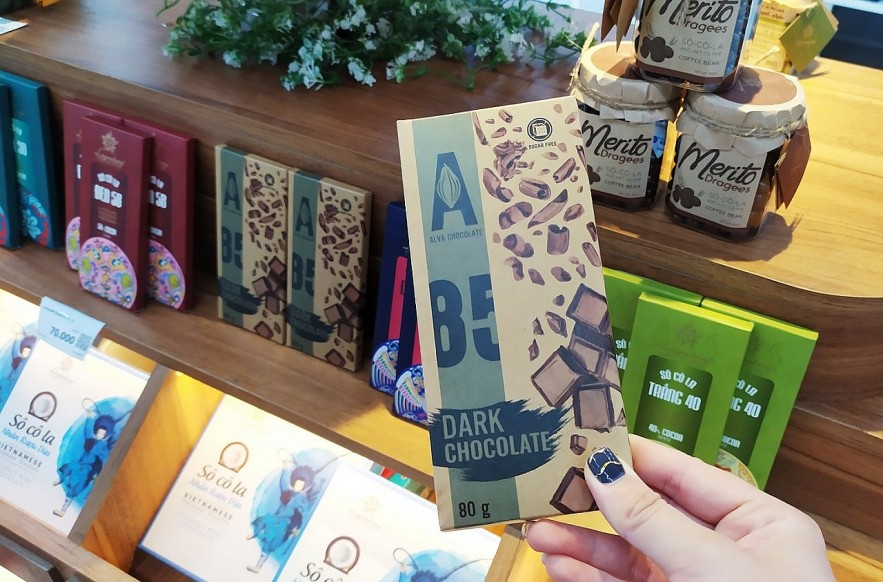 |
| Artisan chocolate |
Artisan chocolate
According to Vietnam's Industry and Trade Magazine, cacao trees were brought to Vietnam by the French, yet the industry has only surged in the last decade. Though named among the world's largest raw material exporters, Vietnam is, however, not well-known for its chocolate products.
In recent years, several companies have invested in bean-to-bar process. Chocolate bars made from cacao grown in Vietnam and garnished with local species and herbs become a trend in the market.
If you Google "Vietnamese chocolate," Marou dominates all the top searches. Founded in Ho Chi Minh City by two French entrepreneurs, the brand is now one of the Vietnamese chocolate representatives in the international market. Their chocolate bars are found all over the world with their signature colorful wrappings. To get yourself Marou bars, head to their flagship stores at 91A Tho Nhuom, Hoan Kiem, Hanoi, or 167-169 Calmette, District 1, Ho Chi Minh City.
Marou is not the only name in the industry. Realizing the great potential of Vietnamese cacao, many other companies step into the bean-to-bar chocolate business.
Where to buy Vietnamese chocolate?
Tbros - 80/7/13 Ba Van, Tan Binh District, Ho Chi Minh City
Belvie - 53 S1 street, Tan Phu District, Ho Chi Minh City
Legendary - 46 Truong Dinh, District 1, Ho Chi Minh City or Lotte Mart in Ho Chi Minh City, Hanoi, Nha Trang and Da Nang
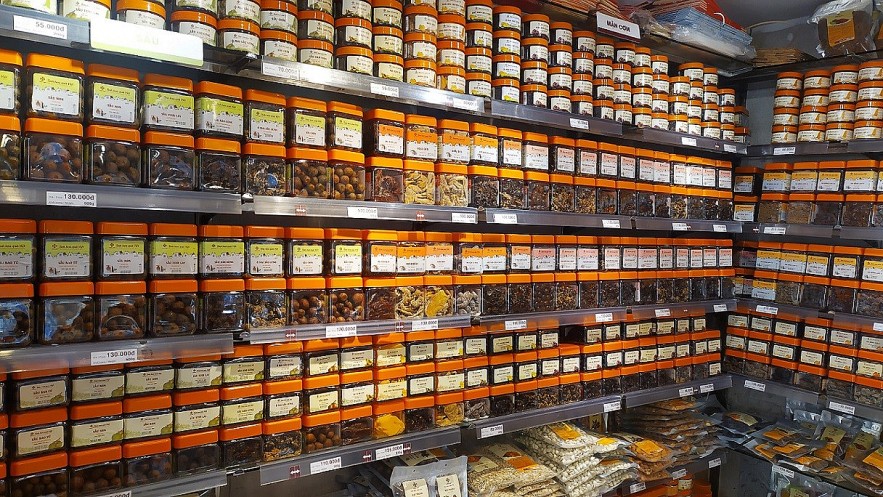 |
| Traditional sweets |
Traditional sweets
Vietnam is known across the world for its diverse cuisine. With that in mind, why not bring home some of the country's unique snacks to remind one of the country's exotic taste?
Traditional sweets refers to hundreds of different kinds of cakes, candies, and sugared fruits. Choosing a signature snack to represent the country is an impossible mission as each province and ethnic group has its own specialties. For example, Hanoians are proud of their "ô mai" - savory fruits, youngsters in Ho Chi Minh City crave "bánh tráng" - seasoned rice paper, while those who come to Da Lat often bring home several packages of hanging persimmons or candied strawberries.
Due to such variety, it would be biased to make a list of specific shopping locations. Rather, we offer you names of dried snacks associated with several famous tourist destinations. While you visit those places, keep an eye out for street vendors or spend some time at local markets, we guarantee that you will find a perfect gift.
What traditional sweets to buy as souvenirs?
Ha Giang - Buckwheat cake
Hanoi - Ô mai (savory fruits), bánh chả (sweet meat pie in lumps), bánh cốm (cakes made from young sticky rice)
Da Lat - Dried fruits and nuts, candied strawberry and mulberry, hanging persimmon
Hue - Mè xửng (sesame sweet), bánh ép (pressed dough), kẹo cau (areca nut-shaped candy)
Ho Chi Minh City - bánh tráng (seasoned rice paper), cơm cháy (scorched rice with pork floss)
Soc Trang - Bánh pía (durian pastry with salted egg york)
Ben Tre - Coconut candy
Souvenirs
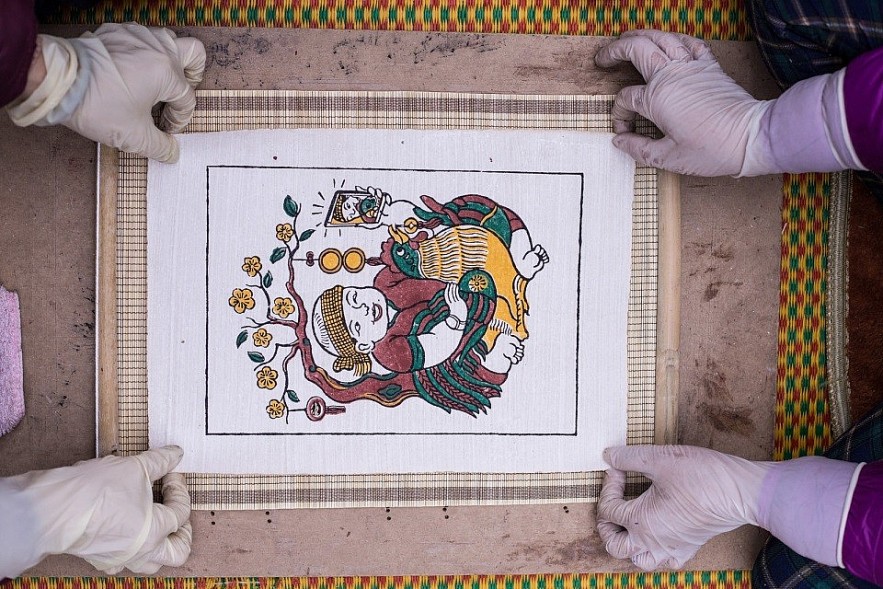 |
| Dong Ho paintings |
Dong Ho paintings
Dong Ho paintings refer to folk woodcut printings stemming from Dong Ho village (Bac Ninh province). To make a painting, artisans make several wooden printing plates, cover each with a different color, then pressed a piece of Do paper against the plate. Artists use all-natural colors for their pictures: burnt bamboo leaves for black, cajuput leaves for green, copper rust for blue, pine resin for amber, and crushed eggshells mixed with paste for white.
Inspired by traditional tales and poems, Dong Ho paintings carry lessons passed down by generations of Vietnamese people. Most of the works reflect the aspiration for a peaceful, happy and prosperous life.
Despite the government's effort to preserve the heritage, few modern households can even recognize the traditional paintings. While the art form is dying out, there are a few families that still earn their living by the age-old craft. Buying these rare gifts support these families and helps preserve the ancient tradition.
Where to buy Dong Ho paintings?
VI-ART - 179/1, Hoang Hoa Tham, Ba Dinh district, Hanoi & 72/37 street 4, quarter 6 - Hiep Binh Phuoc, Thu Duc, Ho Chi Minh City
Dong Ho village, Thuan Thanh district, Bac Ninh
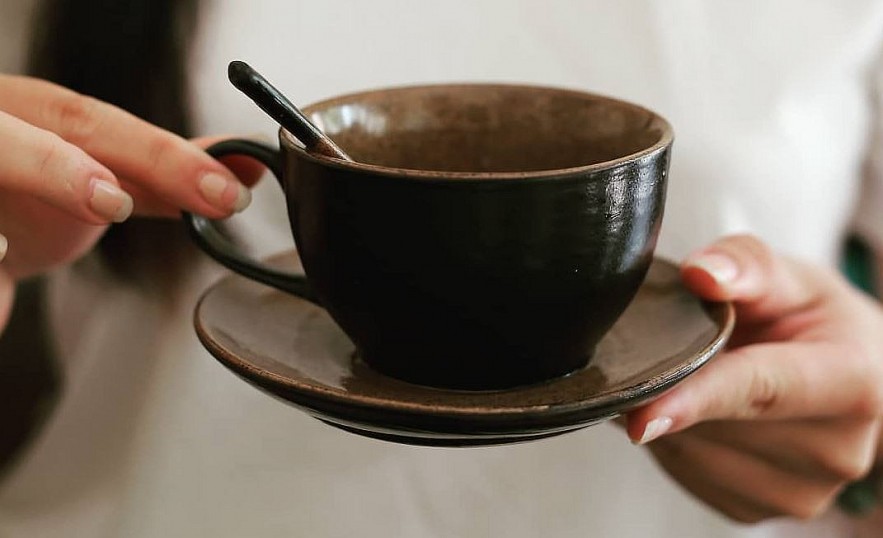 |
| Ceramics |
Ceramics
Vietnamese ceramics are now a huge part of the country’s identity. Given the country's diversity of ethnic groups, ceramics in each region has special features.
Bat Trang, a famous ceramic village on the outskirts of Hanoi, attracts both casual browsers and serious collectors for its distinguished cracked glaze products. Meanwhile, Bau Truc, located in Ninh Thuan, preserves the traditional ceramic technique of the Cham people. In Bau Truc, pottery is fired in an open space and decorated with patterns representing the history and culture of the Cham community.
While ceramic can be bought in the major cities of Hanoi, Da Nang, and Ho Chi Minh City, we recommend heading straight to the villages, where souvenirs are cheaper, more diverse and authentic. Some villages even offer brief pottery-making classes, where you can get your hands dirty and bring home self-made products.
Where to buy Vietnamese pottery?
Craft villages:
Bat Trang, Gia Lam district, Hanoi
Chu Dau, Nam Sach district, Hai Duong
Thanh Ha, Hoi An city, Quang Nam
Bau Truc, Binh Thuan
Pottery shops:
The Garden - 38 Lang Yen, Hai Ba Trung district, Hanoi
Amazing Hanoi - 71 Hang Gai, Hoan Kiem, Hanoi
Authentique - Linh Trung, Thu Duc, Ho Chi Minh City
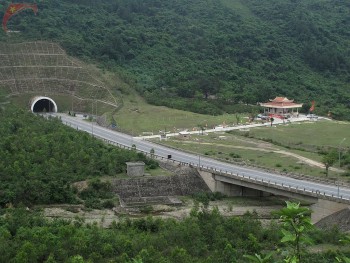 | Discover The Best Road Trips In Vietnam If you are an adventurous person and enjoy traveling on a bike, these wonderful and beautiful roads will satisfy your needs for exploration and discovery ... |
 | Top 4 Most Beautiful Instagram Check-in Places In Dak Nong Visitors who come to Dak Nong Province will never forget the high mountains with thick forests, natural lakes, and waterfalls. They will be also attracted ... |
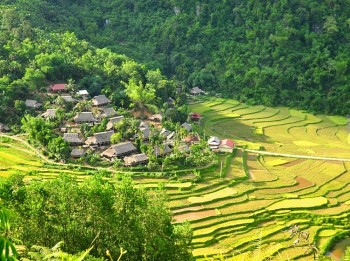 | Pu Luong Nature Reserve, A Hidden Gem Of Vietnam If you are searching for somewhere to hide from the heat and leave behind all the stress, Pu Luong, Thanh Hoa Province is a destination ... |
Recommended
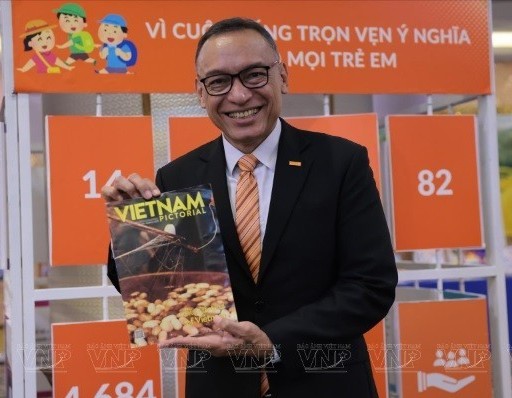 Expats in Vietnam
Expats in Vietnam
Doseba Tua Sinay's Dedication to Vietnam's Children
 Expats in Vietnam
Expats in Vietnam
The Swede Who Fell in Love with Hoi An
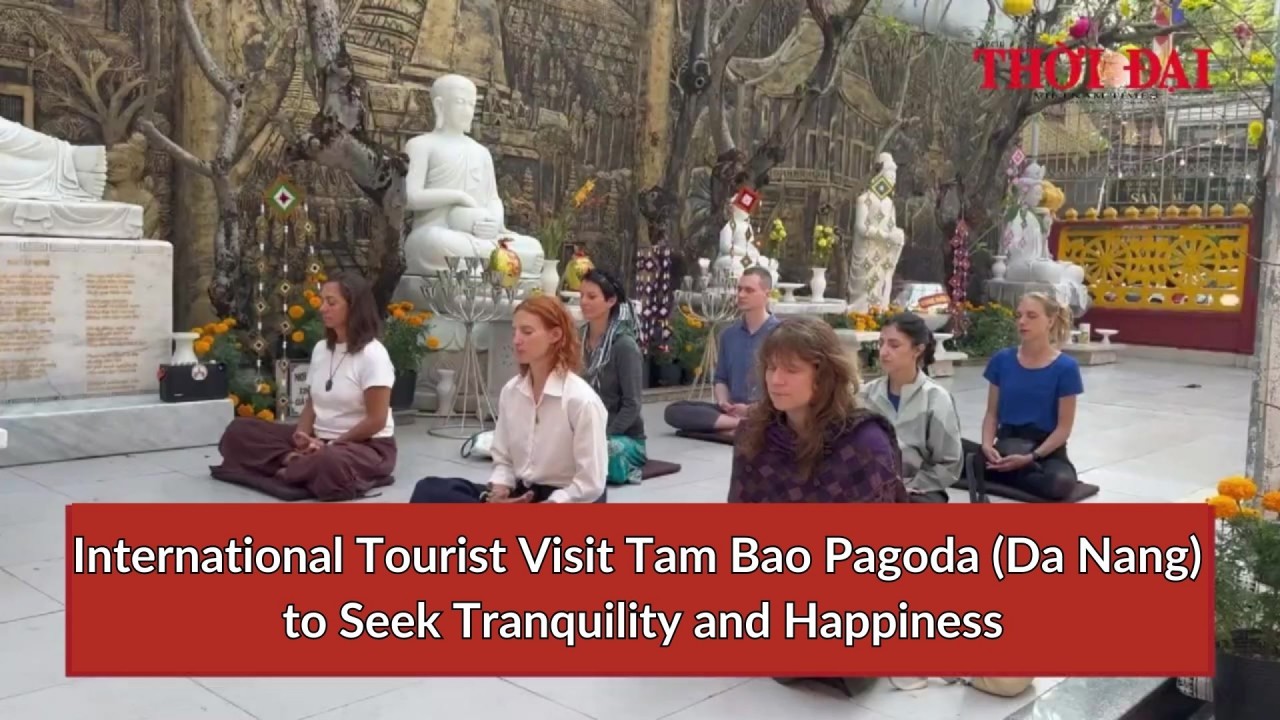 Expats in Vietnam
Expats in Vietnam
International Tourist Visit Tam Bao Pagoda (Da Nang) to Seek Tranquility and Happiness
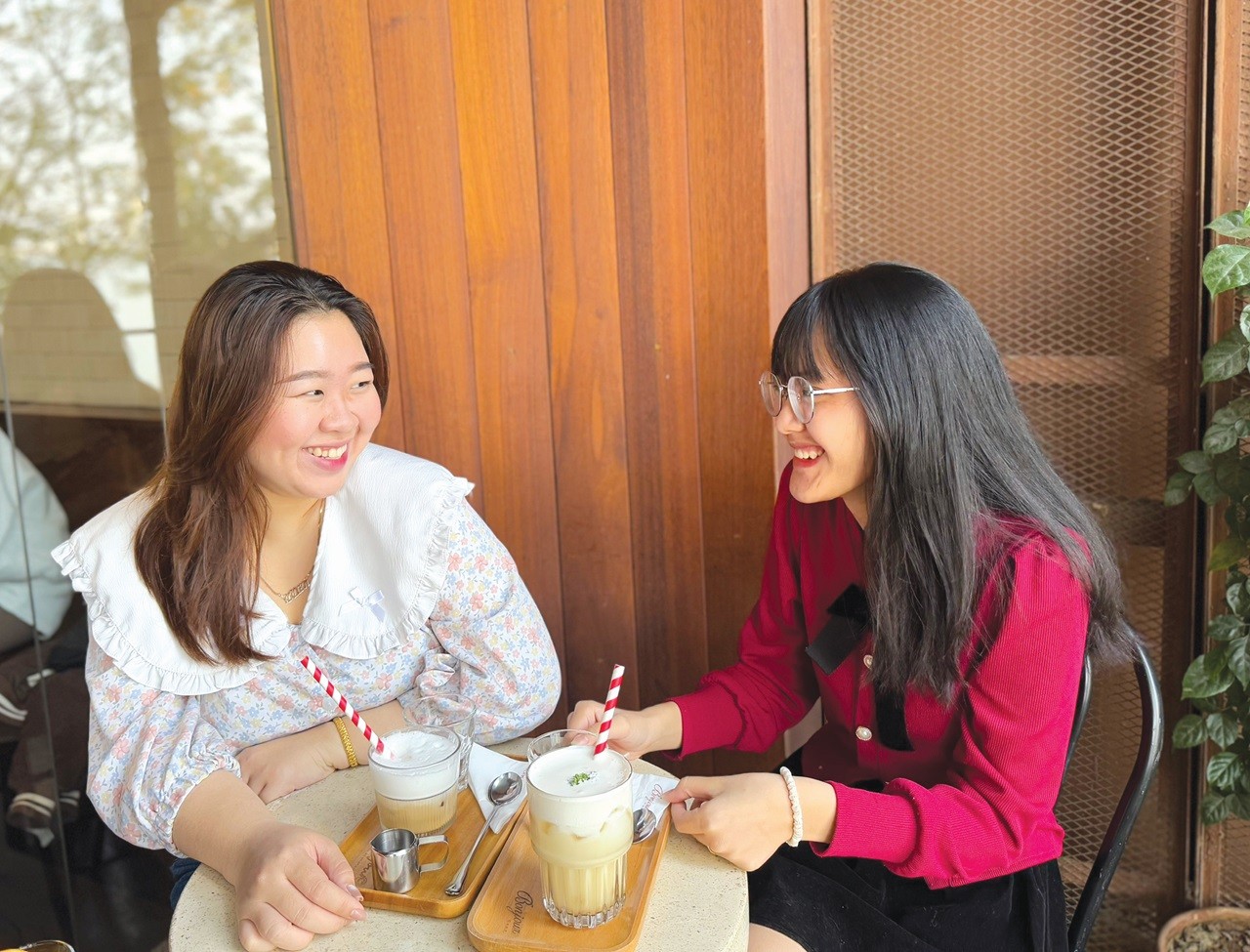 Expats in Vietnam
Expats in Vietnam
Enticing Passion for Vietnam
Popular article
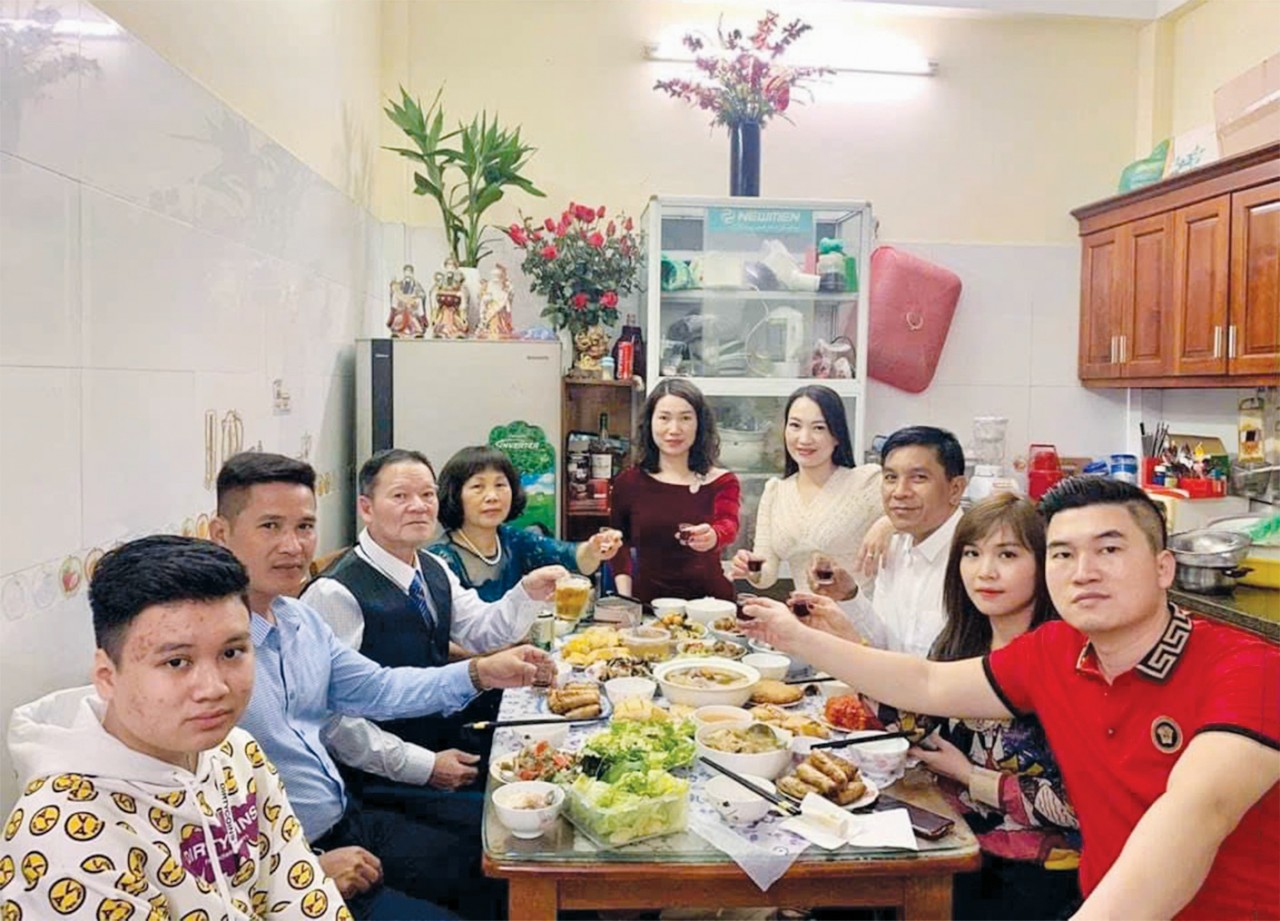 Expats in Vietnam
Expats in Vietnam
Tet Through the Eyes of Foreign Visitors
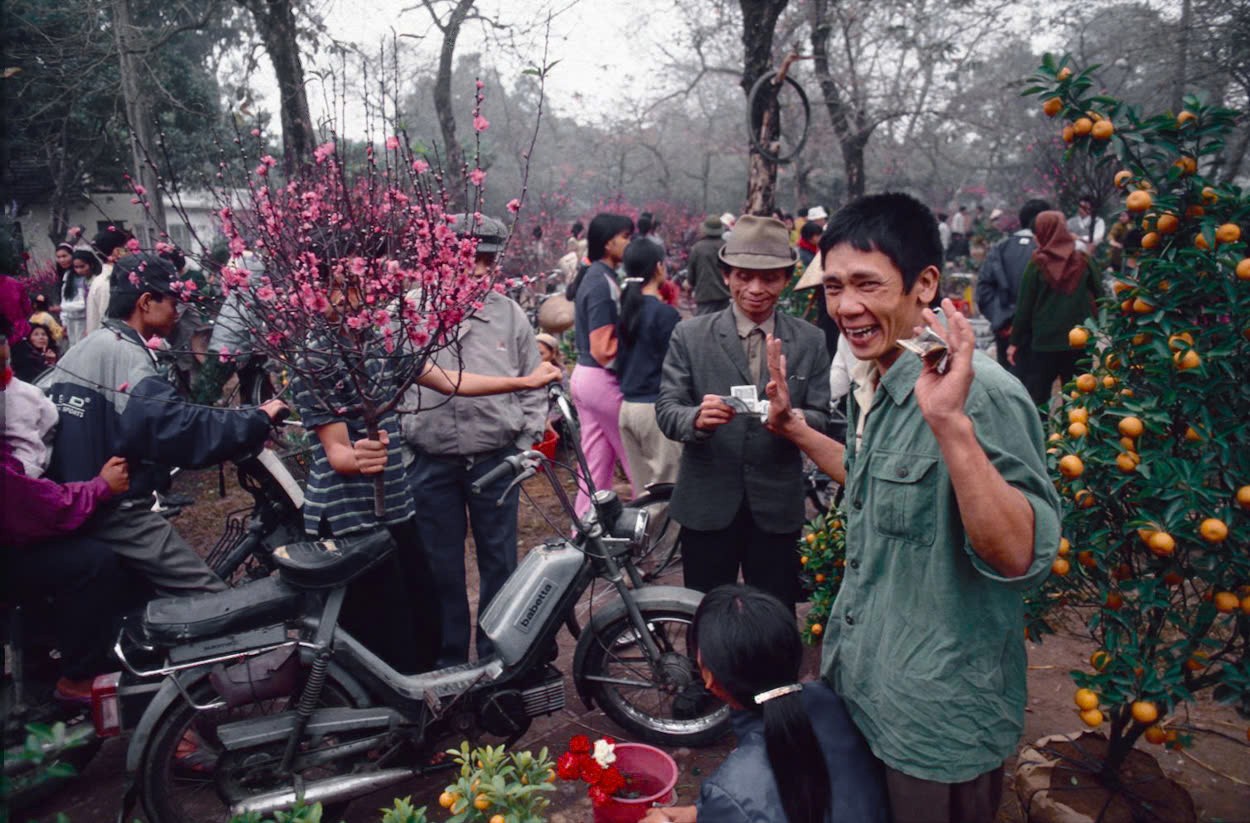 Focus
Focus
Memories of Traditional Tet through the Lens of British Photographer
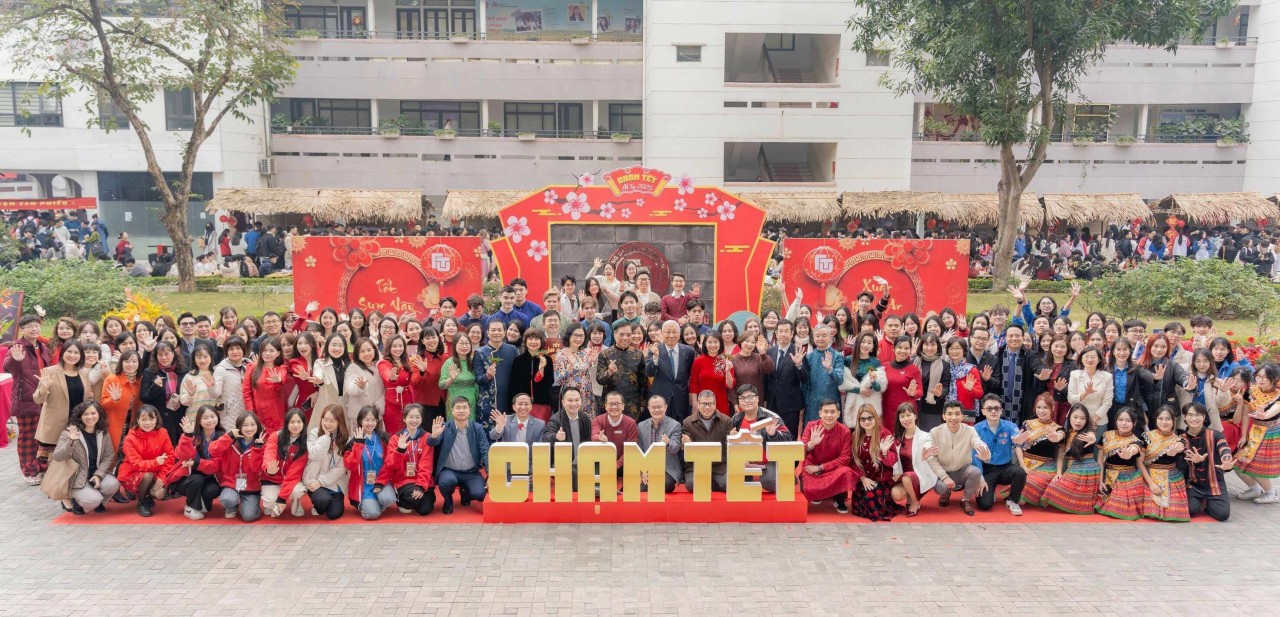 Multimedia
Multimedia
International Students in Hanoi Eager to Celebrate Tet
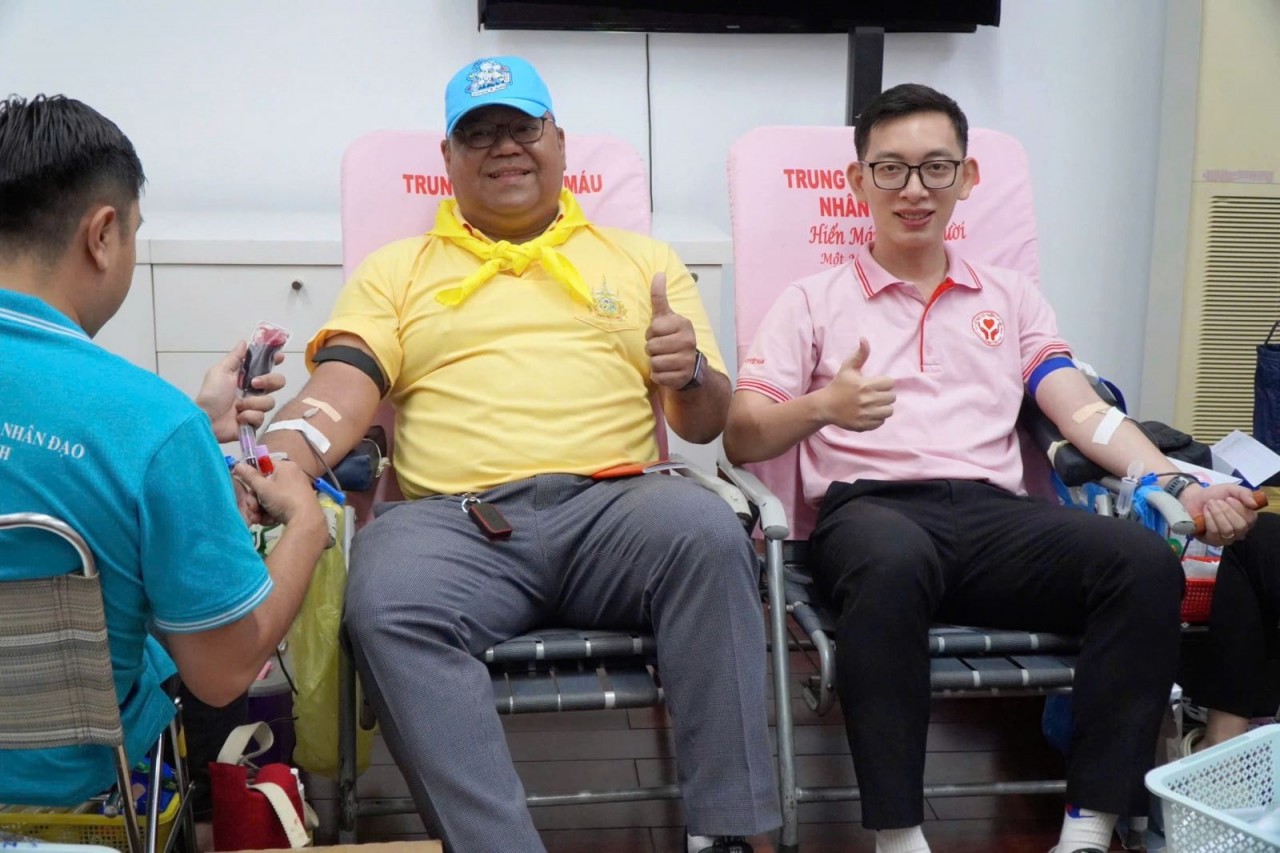 Expats in Vietnam
Expats in Vietnam



